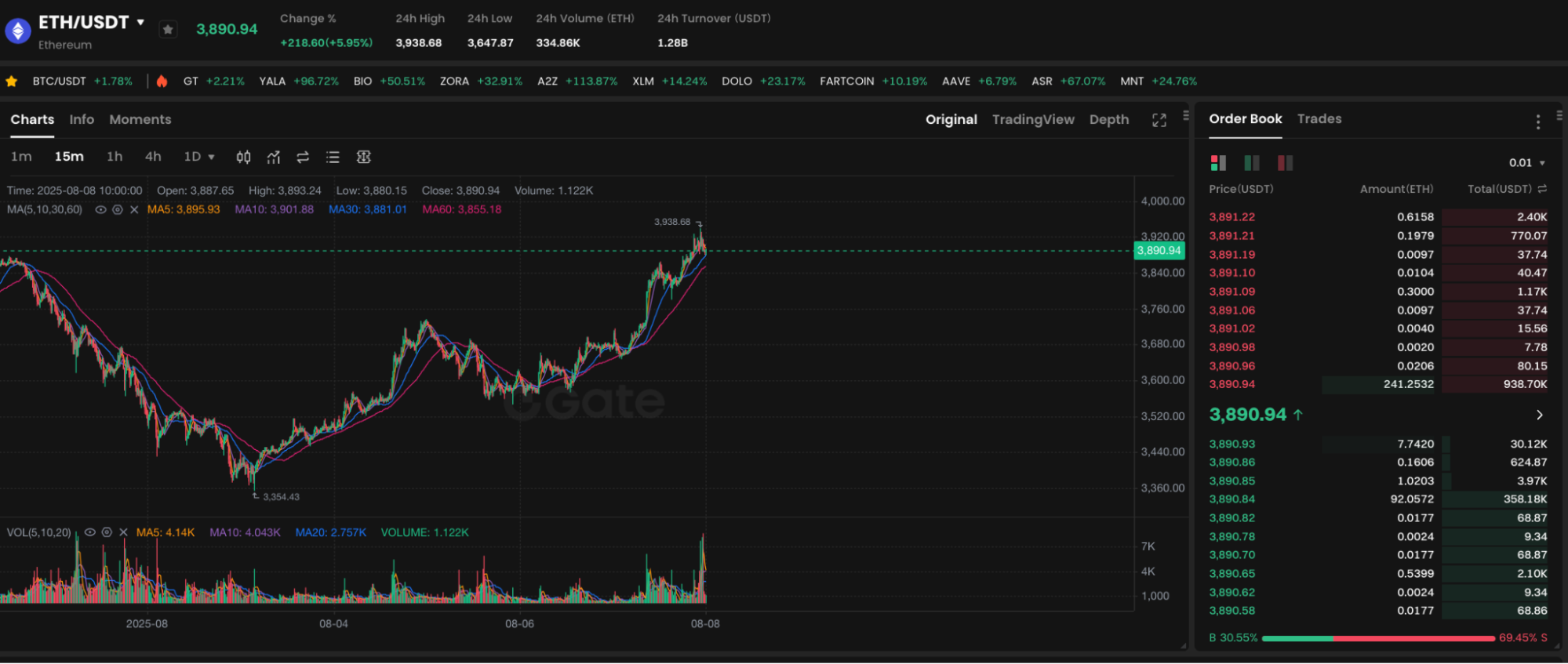ETH Price Returns to $3.8K — Three Major Drivers Behind the Market Rebound

Chart: https://www.gate.com/trade/ETH_USDT
Real-time market data shows Ethereum has made a strong rebound, once again surpassing $3,800. Data indicates that ETH is in an active uptrend as trading volume rises, and the current price is around $3,890.
Catalyst 1: Institutional Capital and Market Inflows
Institutional allocations to Ethereum through publicly traded funds, digital asset ETFs, and custodial products have quietly increased in recent periods. Large buy orders are mainly driven by confidence in ETH’s long-term value—such as growth in DeFi and NFT activity, as well as a booming L2 ecosystem. The derivatives market is also displaying a more bullish sentiment. Data indicates that lending rates have decreased, and buy orders for ETH/USDT are accumulating on most exchanges, forming a strong capital base for ETH price support.
Catalyst 2: Meaningful Technical Breakouts
The $3,800 level marks the intersection of several short-term resistance points, acting as both a previous high and a psychological threshold. If the price can remain stable and break above this range, it may trigger momentum buying, unlocking higher targets such as $4,000. Multiple daily closes above this level would reinforce trend confidence. This is especially true after ETH has reclaimed $3,800. However, if short-term volume is lacking, upside momentum could weaken, leading to a pullback or even a false breakout.
Catalyst 3: Steady Ecosystem Health and Growth
The Ethereum ecosystem continues to grow, supported by Layer-2 scaling, an improved burn mechanism that reduces net issuance, and rising developer and DApp activity. While these fundamentals are sometimes overlooked, when combined with external capital inflows, they can significantly boost market expectations. Ecosystem improvements not only strengthen medium- and long-term buying confidence but also improve ETH’s perceived long-term value.
Risk Notice and Investment Considerations
ETH’s return to $3,800 is a constructive signal, but investors should remain alert to systemic risks: macroeconomic tightening, Bitcoin pullbacks, or unexpected events (like security breaches or exchange liquidations) could cause short-term volatility. New investors are advised to keep position sizes under 5–10% of total capital, set strict stop-losses, and monitor underlying trading volumes and support levels. If ETH remains stable, holding a position may be appropriate. If ETH falls below $3,800 again, it’s prudent to reduce exposure or wait on the sidelines.
Conclusion
ETH’s move back above $3,800 reflects a rebound in short-term buying and a restoration of market confidence, but this single signal is not sufficient reason for blind optimism. Prudent risk management, combined with attention to trend and ecosystem fundamentals, is a stronger approach for finding medium- and long-term opportunities.
Related Articles

Pi Coin Transaction Guide: How to Transfer to Gate.io

Flare Crypto Explained: What Is Flare Network and Why It Matters in 2025

How to Use a Crypto Whale Tracker: Top Tool Recommendation for 2025 to Follow Whale Moves

What is N2: An AI-Driven Layer 2 Solution

Understand Baby doge coin in one article
